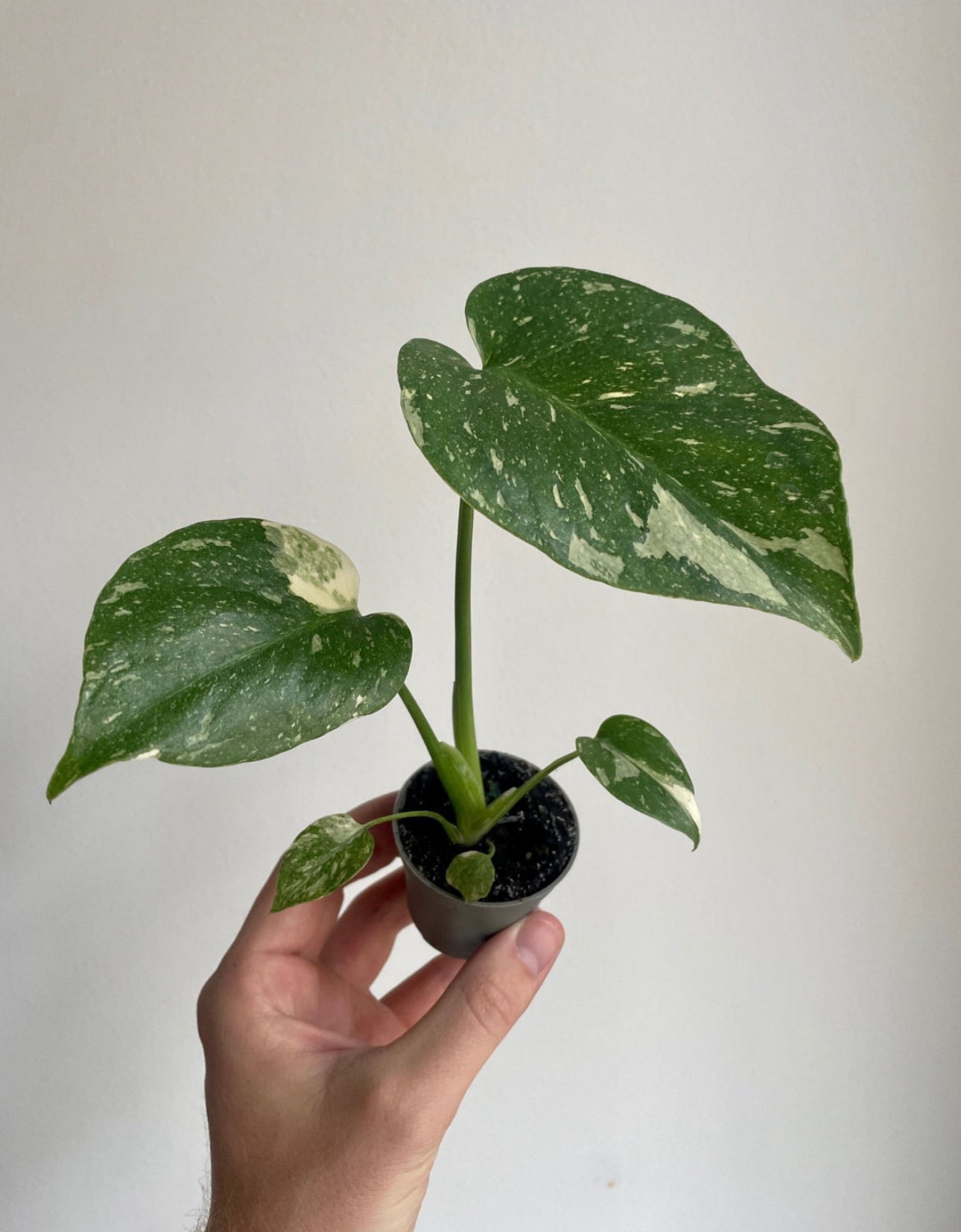Plantthatplant
Monster deliciosa ’Thai Constellation’
Monster deliciosa ’Thai Constellation’
Verfügbarkeit für Abholungen konnte nicht geladen werden
The **Monstera Thai Constellation** is a stunning and highly sought-after variegated variety of the Monstera deliciosa. Known for its dramatic and unique cream-colored variegation, the leaves of this plant appear as though they've been splashed with paint, creating beautiful, starry patterns that resemble a constellation—hence the name.
Originating from tissue culture in Thailand, this plant is a cultivated variant, rather than a naturally occurring one, making it rarer than typical Monstera varieties. The cream and green marbled leaves are the result of a genetic mutation, and each leaf's pattern is unique, making every plant one of a kind. Its large, heart-shaped leaves can grow impressively large under the right conditions.
In terms of care, the **Monstera Thai Constellation** thrives in bright, indirect light, but it can also handle some direct sunlight, particularly in the morning or late afternoon. This exposure will help the plant grow robust and maintain its variegation. Avoid too much direct sunlight, however, as it can cause leaf burn. Like other Monstera plants, it appreciates a well-draining potting mix and occasional watering, allowing the soil to dry out between waterings.
Because of its slower growth and rarity, the Thai Constellation tends to be more expensive than standard Monstera deliciosa varieties, but its striking appearance makes it a prized addition to any plant lover's collection.
Plant care involves providing the right environment and conditions to ensure a plant’s healthy growth and longevity. Although the specifics of plant care vary depending on the species, the core elements of care generally revolve around **light, water, soil, humidity, temperature, and feeding**.
### 1. **Light**
Most plants thrive in bright, indirect light, though some species need more direct sunlight, and others prefer low light. It’s crucial to understand the light requirements of a plant to avoid underexposure or burning the leaves with too much sun. For example, plants like succulents and cacti enjoy direct sunlight, while ferns and some tropical plants prefer shadier spots.
### 2. **Watering**
Proper watering is key to plant care, and it’s often where plant owners make mistakes. Most plants prefer a "soak and dry" method, where the soil is thoroughly watered and then allowed to dry out before the next watering. Overwatering can lead to root rot, while underwatering can cause leaves to wilt and turn brown. Always check the top inch or two of soil before watering to ensure it’s dry.
### 3. **Soil**
The type of soil used plays a big role in plant health. Most indoor plants prefer well-draining soil, which allows excess water to escape and prevents roots from becoming waterlogged. For example, succulents and cacti thrive in sandy, well-draining soil, while tropical plants like Monstera or pothos prefer a rich, loamy mix that retains some moisture.
### 4. **Humidity**
Many houseplants, especially tropical varieties, love humidity. Plants like ferns, calatheas, and orchids thrive in high humidity environments, making them ideal for bathrooms or kitchens. If your home is dry, misting the plants, placing them on a humidity tray, or using a humidifier can help maintain their health.
### 5. **Temperature**
Most houseplants do well in temperatures between 18-24°C (65-75°F). Sudden temperature changes, drafts, or placing plants near heaters or air conditioners can stress them out. It’s essential to keep plants in stable, comfortable conditions for optimal growth.
### 6. **Fertilizing**
Plants need nutrients to grow, and using the right fertilizer can help. During the growing season (spring and summer), fertilize your plants every few weeks to encourage healthy growth. However, be cautious not to over-fertilize, as this can cause leaf burn or nutrient imbalances.
### General Tips:
- **Pruning**: Trim off dead or yellowing leaves to encourage new growth and prevent diseases.
- **Pest Control**: Regularly inspect plants for pests like spider mites, aphids, or mealybugs. If you spot any, isolate the plant and treat it with insecticidal soap or neem oil.
- **Repotting**: Repot plants when they outgrow their current container, usually every 1-2 years. This gives the roots more room to grow and provides fresh nutrients from new soil.
By carefully balancing these factors, you can create the ideal environment for your plants to thrive, whether they’re low-maintenance succulents or high-maintenance tropical plants.
Aktie


